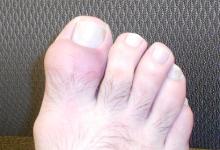ICER Report Claims RA Drugs are Not Cost Effective Save

On Friday March 24, the nonprofit Institute for Clinical and Economic Review (ICER) presented its report on the cost and value of targeted immune modulators (TIMs) for rheumatoid arthritis (RA) in a meeting in Boston that included clinical experts, manufacturers, payers, and patients.
The final report, a draft of which had been open for public comment, concluded that none of the available TIMs were within commonly accepted thresholds for cost effectiveness.
During the meeting, many topics of conflict and controversy were addressed along with the overall conclusion, such as denials of treatment, a lack of transparency, and the typical step-therapy protocols that require patients to fail conventional disease-modifying anti-rheumatic drugs (DMARDs) before being able to receive a biologic. Of particular concern, according to Sandie Preiss, vice president of advocacy and access of the Arthritis Foundation, was the finding in a survey of patients, that 22% of patients reported that they had to repeat step therapy when their insurance changed. In other words, after failing on a DMARD and then being successfully treated with a biologic, they had been required to repeat the DMARD before once again receiving a biologic, potentially allowing damage to occur.
Other questions were raised about whether induction therapy should be further emphasized, what should be the role of pharmacy benefit managers, and what to do about the outsize influence of rebates. Participants suggested that a pay-for-performance approach might be useful, and insisted on the need for real-world data rather than reliance on clinical trial data. Patient representatives called for more patient-reported outcomes to be used in research.
The meeting concluded with a statement from ICER’s president Steven Pearson, MD, who said, "I come out of this meeting with a strange mixture of optimism and despair. The despair is based on just how awful the system can be, but in some weird way, ICER has looked at some other topics where patients have been waiting for the first treatment and are just desperate to get something. Here we have had wonderful innovation over time but we're still stuck in the swamp somehow and that's the disheartening part. It feels like the science, the innovation, has been brilliant -- the ability to transform patients' lives has been brilliant, and yet our system has put patients still in a bad situation and has left people who have very good intentions trying to figure out how to change the grinding gears in a way that makes sense."
The Report and Its Impact
The executive summary of the report stated that TIMs such as biologic agents and small molecules, "provide substantial clinical benefit" in comparison to conventional DMARDs alone. However, "their additional costs translate into cost effectiveness estimates that exceed commonly cited thresholds,” in that they range from approximately $170,000 to $270,000 per quality-adjusted life year (QALY) gained."
Commonly cited thresholds for cost-effectiveness are $50,000 to $150,000 per QALY gained, the report noted.
"The ICER value framework proposes a budget impact threshold above which a drug or a product would likely contribute significantly to excessive growth in healthcare costs," explained Laura T. Pizzi, PharmD, of Thomas Jefferson University in Philadelphia, in American Health & Drug Benefits.
In the executive summary, the ICER representatives noted that in recent years, the use of TIMs has become widespread. "Historically, RA was associated with both progressive disability and a shortened lifespan, but improvements in earlier diagnosis as well as aggressive use of TIMs have greatly improved survival and other key outcomes."
But these drugs are undeniably costly. For instance, the wholesale acquisition cost of the market leader adalimumab (Humira) in February 2017 was $2,221 for a 40-mg syringe, which is usually given every 2 weeks. Moreover, the costs of adalimumab and the other market leader, etanercept (Enbrel) have risen 70% to 80% in the past 3 years, rates that were 12 to 15 times higher than inflation, according to the ICER report (Those prices do not reflect rebates, assistance programs, or discounts offered by manufacturers).
Patients on Medicare can expect annual out of pocket expenses of $1,600 to $4,500, Daniel Ollendorff, PhD, chief scientific officer of ICER, said at the meeting.
But the impact of the report, according to Seth D. Ginsberg, president of the Global Healthy Living Foundation, a patient advocacy group, will be felt by patients. "Insurers are going to use ICER's report as justification for dramatically restricting access to these drugs. Full stop," Ginsberg told MedPage Today.
In response, Ollendorf said in an interview, "It's definitely not the case that we set out to do anything that would limit access to medications."
"We simply wanted to try to understand the evidence as it stands today on whether there are clinical findings that separate these treatments from each other in some way that could potentially inform what an appropriate sequence of treatment might be, and/or whether the prices of these drugs, even after discounts, are aligned with the clinical benefit they bring to patients," Ollendorf said.
The Analysis
The basis of the analysis was a review and network meta-analysis of available clinical studies, including 67 randomized clinical trials and 17 observational studies. "All TIMs produced statistically and clinically superior improvements in symptom response, disease activity, radiographic progression, and other important outcomes when compared to conventional DMARD therapy alone," the report stated.
"We calculated the number needed to treat to achieve a clinical remission. Those numbers are 20 or less for all of the TIMs," explained Ollendorf.
The ICER analysts also used a sequential treatment cohort model that evaluated the cost-effectiveness of each of the available TIMs compared with conventional DMARDs and against adalimumab. The outcomes of the model included discounted lifetime total payer costs, years of life, QALYs, and incremental cost-effectiveness ratios, from a payer/health-system perspective.
The report also noted that adalimumab, etanercept, infliximab (Remicade), and rituximab (Rituxan) were numbers 1, 3, 4, and 5 in global sales among the top 20 prescription drugs, and while that includes all indications, RA represents a large proportion of this.
For a base case, a lifetime of TIM treatment in combination with conventional DMARDs was associated with substantial increases in QALYs, according to the analysis, ranging from 1.88 for tofacitinib (Xenjanz) to 2.43 for etanercept when compared with conventional DMARDs. For those TIM agents indicated for monotherapy, the lifetime horizon improvements in QALY ranged from 2.20 with adalimumab to 2.60 with intravenous tocilizumab (Actemra) in comparison with conventional DMARDs.
For the comparison of the individual TIMs versus adalimumab, which involved calculation of discounted lifetime incremental cost-effectiveness ratios, eight were less costly and more effective than adalimumab:
- Rituximab (Rituxan)
- Intravenous abatacept (Orencia)
- IV tocilizumab
- Subcutaneous tocilizumab
- Certolizumab pegol (Cimzia)
- Subcutaneous golimumab (Simponi)
- IV golimumab
- Infliximab
Of those, two (subcutaneous abatacept and etanercept) were more costly but more effective, with cost-effectiveness ratios of $163,000 and $119,000 per QALY, respectively. "For those two agents, you have to spend more but you get more," said Jonathan Campbell, PhD, of the University of Colorado School of Pharmacy in Aurora, who presented the analysis at the meeting. The remaining TIM, tofacitinib (Xeljanz), was more costly and less effective.
The Response
The report was open for public comment for a month, and the meeting preparation materials included commentary from various stakeholders, including the Arthritis Foundation, the American College of Rheumatology (ACR), various pharmaceutical companies, and patient advocacy groups.
In its comments, the Arthritis Foundation noted that a limitation of the ICER modeling was its focus primarily on older patients, which would under-represent the RA population. "If patients with early diagnosed mild RA were included in the economic model, we would expect the population treated with targeted immune modulators to accrue greater additional quality adjusted life years," the foundation explained in a statement.
They concluded, "The Arthritis Foundation cannot support any recommendations that limit patient access to needed therapies or could result in a patient on a stable drug no longer having access to that drug."
The ACR response, given by Sharad Lakhanpal, MD, the college's president, raised several other issues. "If the analysis starts from the time of DMARD failure and lack of ACR response, what are the treatment options in the absence of biologics? How has the natural history of disease progression been incorporated in the model? For example, failure to initiate effective strategies after an inadequate response to conventional DMARDs would be expected to lead to further decrease in the [Health Assessment Questionnaire] HAQ scores (1.45 average versus 1.7 at the model entry). These concerns raised questions about whether the model adequately captures long term outcomes in persons who fail to respond to DMARDs."
Lakhanpal also stated that they were unable to find evidence of external model validation for the analysis, and requested "validation of the model-based outputs (such as 5-year survival, 5-year cumulative rate of hospitalization, and cumulative rates of cardiovascular events and HAQ trajectories) by comparing them with external data from large longitudinal registries."
Another concern raised by ACR was that the ICER report "does not include transparent disclosure information from the members of the ICER team or reviewers as well as funding sources that supported the work, which are critical when publishing scientific reports that are meant to impact care." The ICER representatives stated that their employees are subject to a strict code of ethics to avoid conflicts of interest. They receive funding from multiple sources, available on their website.
The ACR statement also argued that the report focuses primarily on clinical trial data. "Our concern is that most trials provide only short-term data on drug efficacy and do not adequately reflect the numerous treatment changes required to control RA in clinical practice."
The Institute for Patient Access, "a physician-led policy research organization dedicated to maintaining the primacy of the physician-patient relationship in the provision of quality healthcare," raised concerns about ICER's conclusion that the price of TIMs exceeds the accepted threshold for cost effectiveness. "Health plans may use this conclusion to limit patients' options for RA treatment, despite the fact that ICER’s model for calculating cost effectiveness is, arguably, ill-suited for arthritis treatment."
That group also suggested that the use of QALY methodology does not address aspects of RA such as pain and other subjective measures. "QALY cannot adequately reflect all of the factors that impact RA patients and their quality of life," the institute stated.
Brian Kennedy, executive director of the Alliance for Patient Access, concurred, stating, "Evaluating cost effectiveness of breakthrough therapies like TIMs for rheumatoid arthritis is an important exercise. But patients can be hurt when health plans use the results of predictive modeling, which are inherently imprecise, to justify restrictions on which medications they'll cover for which patients. Population-level analytics cannot predict which treatment will work for any individual patient. So these data points should not be used by health plans to override the physician-patient relationship and impede a physician's ability to determine the best course of treatment for a given patient."
Further objections were raised by the Global Healthy Living Foundation and its arthritis community, CreakyJoints. In a statement on the foundation's web site, the executive director stated, "We interpret the draft report as being additionally biased toward long-term conventional DMARD use," but that "when conventional DMARDs work, CreakyJoints supports their use unconditionally."
The statement continued, "When organizations such as ICER, which have an outsized influence on payers, ignore patients for whom conventional DMARDs don't work to halt joint degradation, we readily accept the benefits of biologics which have been shown to stop joint erosion. ICER should, too."
Other Thoughts
One of the participants in a policy roundtable held during the meeting was Robert Zavoski, MD, medical director of the Connecticut Department of Social Services.
"If you look at the cost of healthcare delivery in this country in the past 50 years, it's gone up about 1 to 2% per year, but the cost of healthcare administration has exploded. In large part all of that has been to save money, which is absurd but there you have it," Zavoski said.
"If we do away with that we could move towards value-based purchasing, which is what I would ask for, based on actual clinical outcomes. The pharmaceutical industry has done some wonderful things in the past 50 years. As a resident, there were diseases that I knew kids were going to die from, but today those kids survive and some of those diseases don't even exist anymore. But we're also bankrupting ourselves and 'you can’t have it both ways.' But I think we can have it both ways if we plan accordingly," he said.
ICER president Pearson also reiterated the goals of the ICER analysis and report.
"The report will be viewed by a lot of people and there will be questions asked about what it adds to the knowledge base. We hope our report will help summarize the important clinical evidence and raise new perspectives," he said.
"It will raise the question of innovation but at what price, and how do we come together to say we cherish innovations that bring real benefits to patients. And we have to figure out how to pay for it in a responsible way. Our reports are used to help people frame the questions for action," Pearson concluded.







If you are a health practitioner, you may Login/Register to comment.
Due to the nature of these comment forums, only health practitioners are allowed to comment at this time.